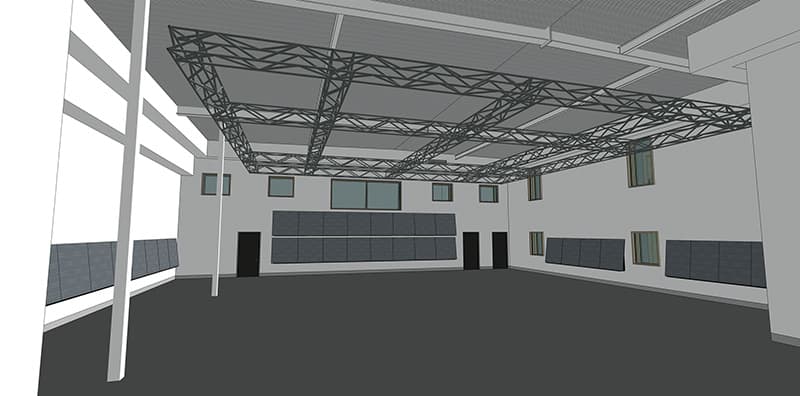
Studio Focus: SAE Melbourne
From the day SAE Melbourne took over its current building in South Melbourne, CEO Paul Ledingham had his eye on the factory next door. It’s been 10 years in the current digs, and in that time SAE has reached the building’s capacity by building the top floor through and adding another 1000sqm. The one double-storey building was never going to be sufficient for the school’s growth, it needed two.
As luck would have it, on one of the rare holidays he had off, the building was put up for auction — with auction day scheduled the day after he got back. When he arrived back at work and saw the sign, Ledingham rallied the troops and in a 24-hour rush managed to do the due diligence and present a winning bid.
It looks to be an exciting time for the school, which shows no signs of slowing down despite uncertainty in government funding across the entire higher education sector. As Ledingham puts it, there’s still a lot to be said for private education, especially in niche sectors like audio and video where hands-on experience and professional interaction is a must. And while online learning supplements the course material at the moment, he doesn’t see audio education moving to solely online courses in the future. A sentiment backed up by the slew of recent hardware acquisitions.
SAE runs its audio engineering students through a series of modules designed to teach good gain structure before letting them loose on tonal-shaping devices.
The first control rooms the students encounter are centred around simple 16-channel consoles; there’s a compressor in the room, but the main aims are to get a handle on gain structure, balancing and pan. From there, they jump up to Tascam digital mixing consoles, with a side order of hardware synths. Then onwards to the Audient ASP8024 large format console, with dual layer control and some tasty outboard gear, and the flagship Neve Genesys room, which also ties into the best recording space in the school. The beginner suites have played host to Mackie and Behringer mixers in the past, but after having a low maintenance run with the large format Audient console, Senior Studio Technician Bradley Toan, opted to buy a couple of Audient 4816 smaller format consoles to start the students out on.


Construction is well underway next door, following the design of Phillips Smith Conwell Architects. The eventual plan will be for all the administration offices to relocate there, but in the first stage, most of the school will shift next door so the current building can be renovated. That is likely to happen in October, with the second phase of redevelopment wrapping up in time for an April 2015 launch. Fingers crossed they’ll hit the deadline, because there’s already been a few delays. For instance, the footings for the elevator shaft were originally engineered to be four metres, so far they’ve had to dig all the way down to 26m!
When all is said and done, the flagship addition to the campus — other than a swanky new reception area and gallery that links the two buildings — will be a 364sqm soundstage. The size of the space is easily big enough to house an orchestra. But, like most of the facilities at SAE, it will cater for all the disciplines of post production, video production, gaming, whatever course module might require a big space. To that end, it will be a well-treated acoustic sound stage, with airlock doors, a big loading dock, a lighting rig, and house one of the most versatile console to be hitting the market in its upstairs control room, an Avid S6. The S6 derives its multi-layer functionality from the Euphonics S5, but supercharged. It will let the audio students feel as at home as the broadcast students, with the ability to run ProTools and Media Composer. And if a student has put together an Ableton Live project and wants to overdub an orchestra in ProTools, they can run both sessions live on the console simultaneously. SAE has opted for the full-specced M10 master section, which means their console will also feature the waveform screens, producer section as well as banks of encoders and faders.
The main control room will be flanked by four edit suites, two on each side, each with a view of the sound stage and all tied back to the S6 when required. In preparation for the S6’s arrival, Ethernet has already been added to the tie lines in most of the existing performance areas. The plan is to invest in a rolling Focusrite Rednet rack, so students will be able to track to the Avid S6 console from anywhere in the building.















RESPONSES